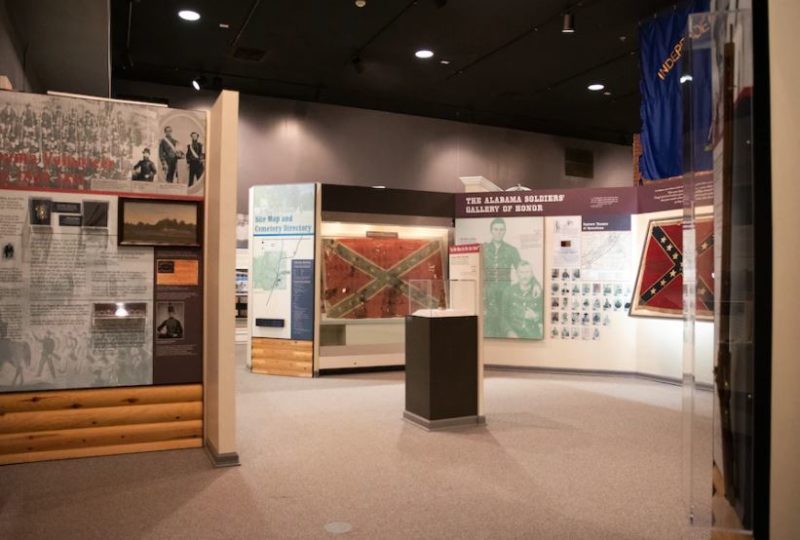Alabama spends more than a half-million dollars a year on a Confederate memorial. Black historical sites struggle to keep their doors open.
Share
Explore Our Galleries
Breaking News!
Today's news and culture by Black and other reporters in the Black and mainstream media.
Ways to Support ABHM?
By Emmanuel Felton, The Washington Post
MOUNTAIN CREEK, Ala. — Down a country road, past a collection of ramshackle mobile homes, sits a 102-acre “shrine to the honor of Alabama’s citizens of the Confederacy.”
The state’s Confederate Memorial Park is a sprawling complex, home to a small museum and two well-manicured cemeteries with neat rows of headstones — that look a lot like those in Arlington National Cemetery — for hundreds of Confederate veterans. The museum, which director Calvin Chappelle said has about 30,000 visitors a year, seeks to tell an “impartial” history of the Civil War.
The museum’s exhibits explain what the White Alabamians who took up the cause of the Confederacy felt was on the line — Alabama was 10th of the then 33 states in the value of livestock, seventh in peas and beans, and second in cotton production. The only hope to save its economic position, the exhibit quotes a former state governor as saying, was for it to secede from the union, and though not mentioned directly, maintain the bondage of hundreds of thousands of Black Americans.
Chappelle explained that the purpose of the museum was to tell the stories of Confederate soldiers; visitors who want a fuller picture of Alabama’s racial history — slavery, reconstruction, Jim Crow and the Civil Rights movement — would have to go elsewhere.
There are a number of museums that tell those stories spread across Alabama, but the Confederate Memorial Park is different. It is the only museum in the state that has a dedicated revenue stream codified in the state’s constitution. So while other museums struggle to keep their doors open, search for grants for funding and depend on volunteer staff, the Confederate Memorial Park is flush with cash. In 2020 alone, the park received $670,000 in taxpayer dollars. That’s about $22 per visitor and more than five times the $4 admission price for adults.

The fight over how to fund Alabama’s museums comes as state lawmakers debate what and whose history should be taught and promoted. In August, the Alabama State Board of Education passed a resolution that banned the teaching of critical race theory, an academic framework that examines the role of race and racism in the crafting of American laws and social norms.
The phrase has become a catchall term that conservatives have used to criticize a number of efforts they say constitute an attack on White Americans and culture. Alabama lawmakers have also introduced bills for the 2022 legislative session that seek to ban the teaching of “divisive concepts” that might make students uncomfortable because of their race or gender. Some have argued that teaching about slavery, racism and bigotry make White students — particularly males — feel bad or ashamed. In Alabama, museums are part of the fight over which telling of the state’s history will prevail.
Read the full article here.
Learn more about museums in Alabama addressing histories of racial injustice here and here.
More Breaking News here.










Comments Are Welcome
Note: We moderate submissions in order to create a space for meaningful dialogue, a space where museum visitors – adults and youth –– can exchange informed, thoughtful, and relevant comments that add value to our exhibits.
Racial slurs, personal attacks, obscenity, profanity, and SHOUTING do not meet the above standard. Such comments are posted in the exhibit Hateful Speech. Commercial promotions, impersonations, and incoherent comments likewise fail to meet our goals, so will not be posted. Submissions longer than 120 words will be shortened.
See our full Comments Policy here.